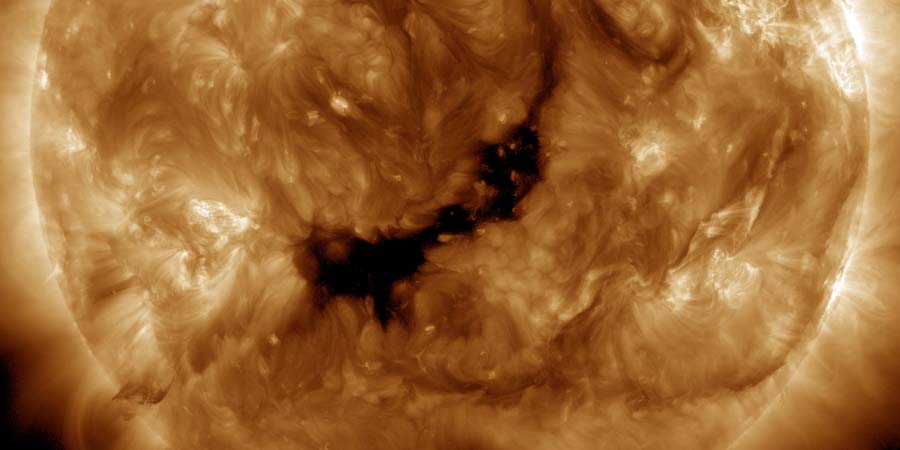Coronal hole faces Earth
Friday, 29 December 2023 18:09 UTC

Solar activity has been fairly quiet the past few days as there are currently no noteworthy sunspot regions on the earth-facing solar disk. However, a different kind of interesting solar feature is currently staring right at us on the earth-facing solar disk and that is a trans-equatorial coronal hole.
Coronal holes are dark areas (as seen in Extreme UV light) on the Sun where magnetic field lines stretch out into space opening up a ''hole'' in the corona where high speed solar wind can escape. This fast solar wind stream compresses the slower wind speed ahead of it and we call this phenomenon a Stream Interaction Region (SIR) or a Co-rotating Interaction Region (CIR). When we see this dense solar wind stream arriving at the Sun-Earth L1 point it is often associated with an increase in the total strength (Bt) of the interplanetary magnetic field. Sprinkle in a southward-pointing Bz component of the interplanetary magnetic field and you got a recipe for enhanced geomagnetic conditions. The high speed solar wind stream that will follow the Co-rotating Interaction Region is predicted to reach a speed of up to 500km/s according to the WSA-ENLIL solar wind model.
This coronal hole hole is located right on the solar equator so we should see a decent effect of the high speed solar wind stream, however the coronal hole is fairly narrow and this is reflected in the predicted solar wind wind speed which is only expected to top at 500km/s which is on the low side for a coronal hole. Therefor we do not expect geomagnetic storm conditions when the solar wind stream arrives on 31 December but it is still something to keep an eye out if you are at a high latitude location like Canada, Iceland or Norway. Aurora and fireworks anyone? It could happen!
Thank you for reading this article! Did you have any trouble with the technical terms used in this article? Our help section is the place to be where you can find in-depth articles, a FAQ and a list with common abbreviations. Still puzzled? Just post on our forum where we will help you the best we can!
Latest news
Latest forum messages
Support SpaceWeatherLive.com!
A lot of people come to SpaceWeatherLive to follow the Sun's activity or if there is aurora to be seen, but with more traffic comes higher server costs. Consider a donation if you enjoy SpaceWeatherLive so we can keep the website online!

Space weather facts
| Last X-flare | 2024/03/28 | X1.1 |
| Last M-flare | 2024/04/27 | M3.0 |
| Last geomagnetic storm | 2024/04/26 | Kp5+ (G1) |
| Spotless days | |
|---|---|
| Last spotless day | 2022/06/08 |
| Monthly mean Sunspot Number | |
|---|---|
| March 2024 | 104.9 -19.8 |
| Last 30 days | 139.7 +33.3 |


